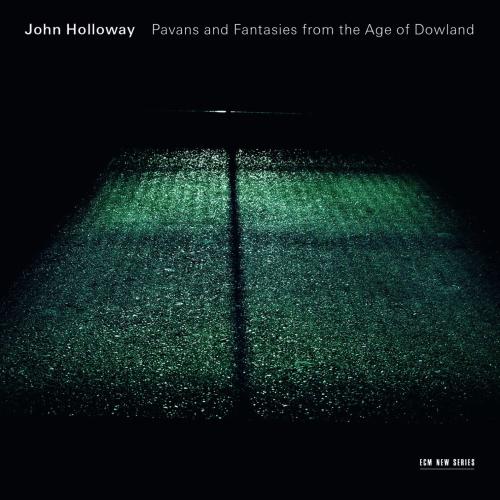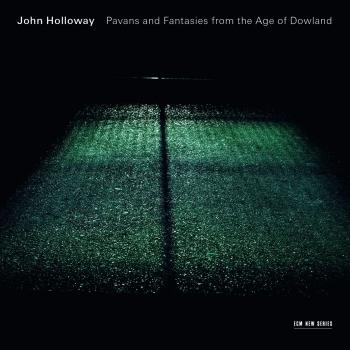
Pavans And Fantasies From The Age Of Dowland John Holloway
Album info
Album-Release:
2014
HRA-Release:
06.07.2017
Label: ECM
Genre: Classical
Subgenre: Chamber Music
Artist: John Holloway
Composer: John Dowland (1563-1626)
Album including Album cover Booklet (PDF)
I`m sorry!
Dear HIGHRESAUDIO Visitor,
due to territorial constraints and also different releases dates in each country you currently can`t purchase this album. We are updating our release dates twice a week. So, please feel free to check from time-to-time, if the album is available for your country.
We suggest, that you bookmark the album and use our Short List function.
Thank you for your understanding and patience.
Yours sincerely, HIGHRESAUDIO
- John Dowland (1563 - 1626):
- 1 Lachrimae Antiquae 04:19
- Henry Purcell (1659 - 1695):
- 2 Fantasy Upon One Note 02:45
- John Dowland:
- 3 Lachrimae Antiquae Novae 04:02
- William Lawes (1602 - 1645):
- 4 2 Airs For 4 03:23
- John Dowland:
- 5 Lachrimae Gementes 03:57
- John Jenkins (1592 - 1678):
- 6 Fantasy No. 12 For 2 Trebles And Bass 03:53
- John Dowland:
- 7 Lachrimae Tristes 05:18
- Thomas Morley (1557 - 1602):
- 8 Lamento For 2 02:34
- John Dowland:
- 9 Lachrimae Coactae 04:01
- Matthew Locke (1621 - 1677):
- 10 Fantasy For 2 Trebles And Bass (From "The Broken Consort") 04:11
- John Dowland:
- 11 Lachrimae Amantis 04:27
- William Lawes:
- 12 Fantasy In C For 5 02:26
- John Dowland:
- 13 Lachrimae Verae 04:14
Info for Pavans And Fantasies From The Age Of Dowland
Violinist John Holloway has carved the deepest Baroque relief into ECM’s surface. With sole exception of Bach’s Sonatas and Partitas for solo violin, he has since 1999 been accompanied by harpsichord and organ or cello continuo in thoughtful and superbly executed programs of music by such composers as Schmelzer, Biber, Veracini, Leclair. For the present disc he joins an all-string ensemble of period specialists in a book of music at once haunting and robustly fleshed. Not only is it renewing to hear Holloway free-floating in a choir of equal voices; his choice of material carries further significance for turning back the dial to one of the great masterworks of the late Renaissance.
The Lachrimae Pavans of John Dowland (1563-1626) take thematic root in composer’s evergreen “Flow My Teares,” a song last recorded for ECM by John Potter on his Dowland Project’s debut. By time the Lachrimae were published in 1604, Dowland had been court hopping for a decade. He composed the collection under the auspices of his then-employer, Denmark’s King Christian IV, whose sister-queen Anne was the subject of its dedication. In addition to being musical landmarks, the Lachrimae represent a watershed historical moment in English music publishing. They came at a time of great frustration for Dowland, who never realized his dream of holding post at the English court. But while melancholy pervades, there are sunlit glades to be discovered among the thickets.
Indeed, there’s plenty of sunshine to be had in the “Lachrimae Antiquae,” which prepares for its daily works with nightlong ablution. As from so much of what follows, its darkness seeps through like a contrapuntal substance of harmonic order. Dowland’s beauties turn supplication into strength and draw the clouds nearer to earth with every added layer. Both musicians and music move as one sinuous entity—must do so, in fact, to achieve the limpid consistency required of the “Lachrimae Tristes,” which as the program’s exact center is the most deeply hued jewel of this crown. The qualities of subsequent variations are as individual as their titles. “Lachrimae Coactae” is threadbare yet flourishing, “Lachrimae Amantis” more viscous, and the “Lachrimae Verae” a burnished hasp of a conclusion.
Shuffled into the Lachrimae are exemplary selections of English consort music from Dowland’s time. Of these, the Fantasy upon one note by Henry Purcell (1659-1695) is the most forthright, while the Fantasy for 2 Trebles and Bass of Matthew Locke (1621/3-1677) cradles fleeting exuberances in downtempo reflections. The brightest surfaces come from William Lawes (1602-1645), whose autumnal Fantasy in C for 5 is another highpoint of the literature assembled herein. John Jenkins (1592-1678) gets a nod in the form of his Fantasy No. 12 for 2 Trebles and Bass, a fugal ripple of a piece with ballroom denouement. Its contrast of floating highs and supportive brushwork from bass violin give it a most expansive reach. Last but not least is Thomas Morley (1557/58-1602), a key figure in realizing the Lachrimae in print, and whose Lamento for 2 (excerpted from his Canzonets for two voyces) is a slow dance between forest sprites, whose leaf-hidden conjugations harness moonlight in every step.
Although there’s so much to admire the form and content of this album, it’s just the tip of a mountain of contemporaneous sources. Listening to Holloway and friends making such sweet music is akin to skipping a perilous journey and diving straight into the treasure horde at the end of it. But its greatest value might just be the desire it inspires to backtrack and see what fruitful lodgings might have been missed along the way.
„The seven Lachrimae Pavans of John Dowland, intensive explorations not only of a single musical theme but also of a single melancholy emotion, are unique, not only in the music of the English Renaissance, but really in the entire history of Western concert music. The reason for their composition is not known, but they are intensely inward works, and a performance that focuses the listener's mind in a contemplative way is required. There's one here in this reading, led by violinist John Holloway, although the recording is quite unusual. Note that the title Pavans and Fantasies from the Age of Dowland doesn't quite describe what's here: the pavans of Dowland himself are the central attraction, and the rest of the music comes from his successors in the 17th century. This music is generally played by a viol consort with a lute, but Holloway's version derives from the specification in the original publication of Dowland's pavans: "set forth for the Lute, Viols, or Violons, in five parts." "Violons" is an old word for members of the violin family. Reasoning that the pieces can be played on a lute alone, Holloway chooses to interpret these as three separate options, so what's here is a reading that omits the lute and is played on four violas and a bass violin. The sound is at the same time sharper and more delicate than that of the reflective viols, and the delicacy is enhanced by the lack of the rhythmic component provided by the lute. The result is quite unexpected, but it works: the splashes of dissonance in the music emerge in quite an uncanny way here. Dowland seems to use dissonance in a different way in each pavan, and the apex of the trend is reached in the chaotic opening of Matthew Locke's Fantasy for two trebles and bass, which Hugo Wolf might have been proud to have written. Holloway and his quartet of German string players are admirably supported by ECM's engineering, which uses a studio in Zürich; ECM isn't really known for undertaking Renaissance repertory, but maybe it should be.“ (James Manheim, AMG)
John Holloway, violin, viola
Monika Baer, violin, viola
Renate Steinmann, violin
Susanna Hefti, viola
Martin Zeller, bass violin
Recorded March 2013, Radio Studio Zürich
Engineered by Andreas Werner
Produced by Manfred Eicher
John Holloway
took up baroque violin in the early 1970s. With his baroque ensemble, L’Ecole d’Orphée, he made the first complete recording on historical instruments of Händel’s instrumental chamber music. Since then his growing chamber music and solo discography has ranged from Castello and Fontana to Vivaldi, Telemann and beyond. Since 1997 he has recorded for ECM New Series, with acclaimed albums including The Sonatas and Partitas for Violin Solo by Bach.
Holloway is one of the most experienced concertmasters in the Early Music world, having led orchestras for such diverse directors as Christie, Hogwood, Leonhardt, Koopman, Malgoire, McGegan. He was for many years concertmaster of Roger Norrington’s London Classical Players and of Andrew Parrott’s Taverner Players, leading groundbreaking performances and recordings of repertoire from the Florentine Intermedii to Brahms symphonies.
This has in turn led to numerous projects featuring Holloway as conductor and/or director from the violin, in repertoire ranging from Monteverdi to Britten.
He has taught at the Guildhall School of Music and Drama in London, the Schola Cantorum in Basel, the Early Music Institute of Indiana University in Bloomington, and the Hochschule für Musik in Dresden, Germany. From 2006 to 2012 he was Artistic Director of the International Competition and Masterclass "Violin in Dresden".
Booklet for Pavans And Fantasies From The Age Of Dowland









